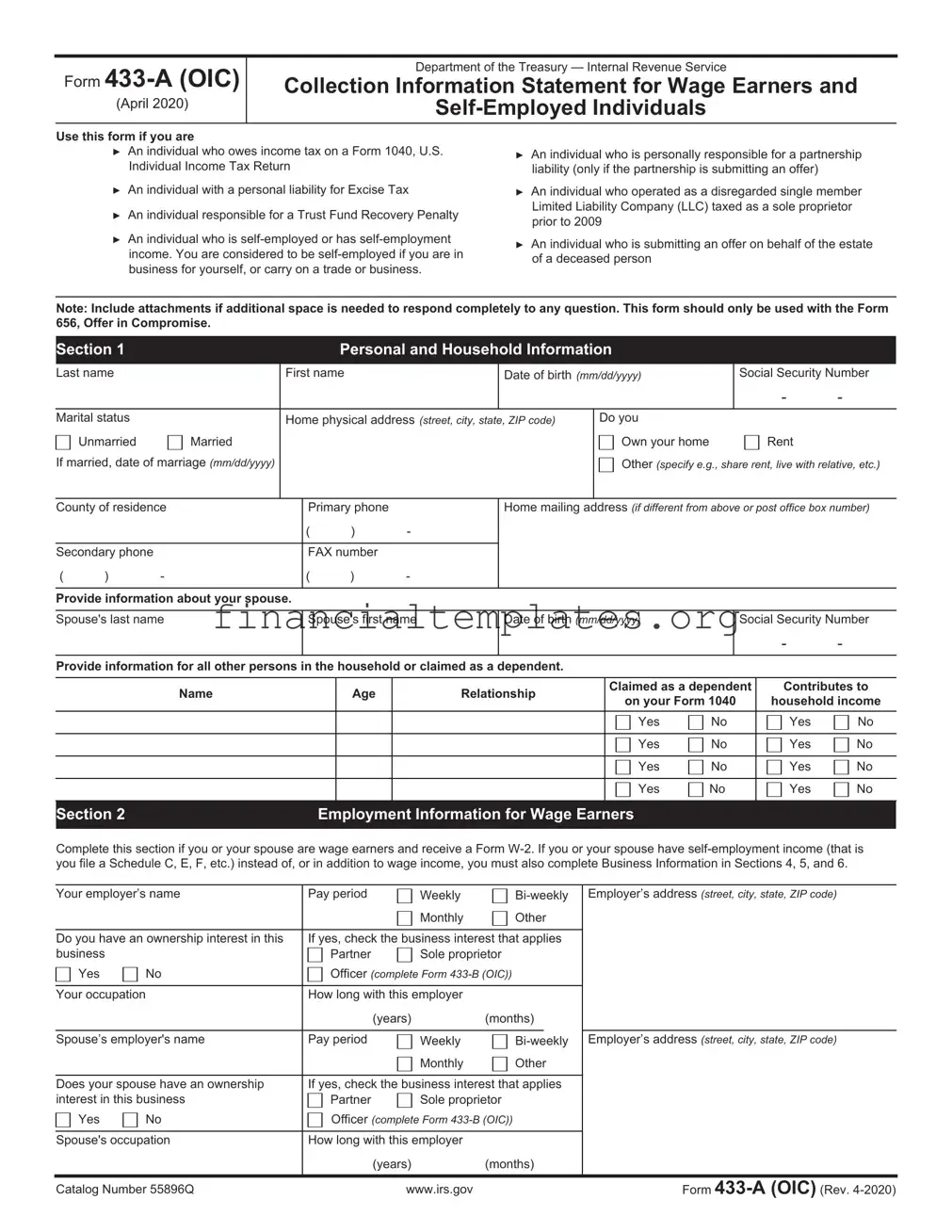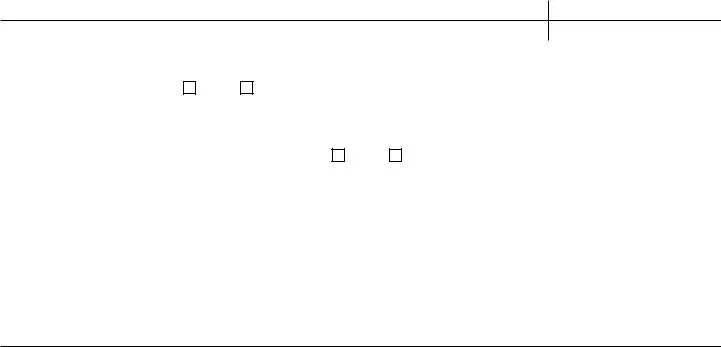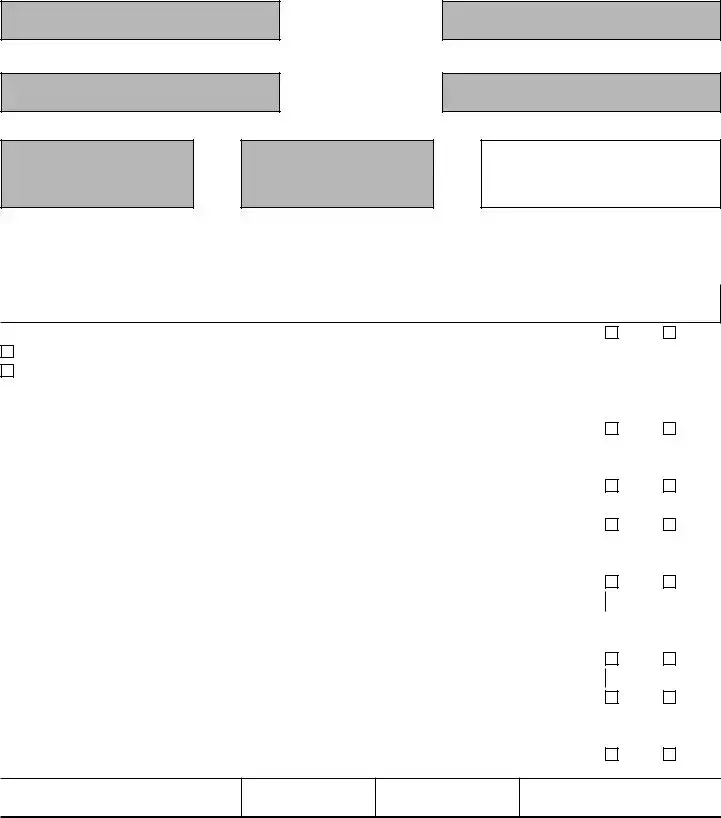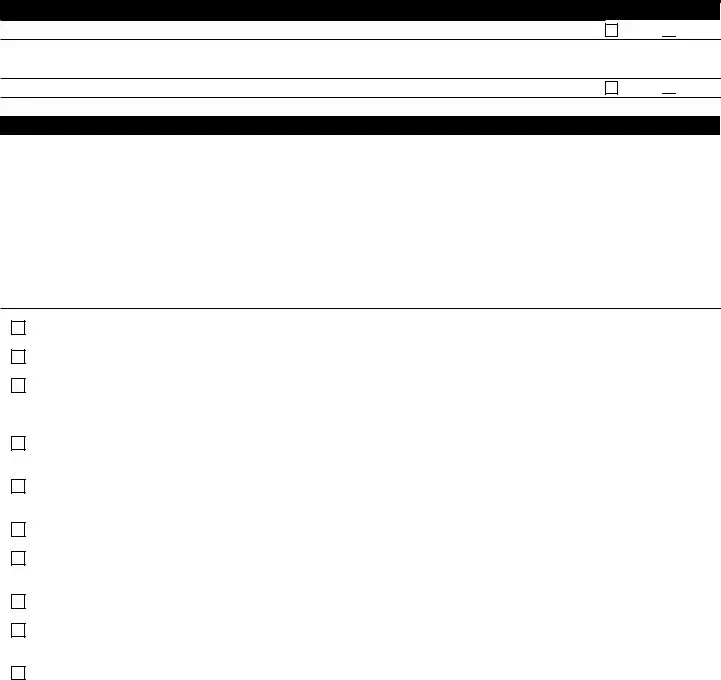The IRS Form 1040, U.S. Individual Income Tax Return, is similar to the IRS 433-A (OIC) form in that both require detailed financial information from the taxpayer. The Form 1040 focuses on documenting an individual's annual income and taxes owed, while the 433-A (OIC) form is used to provide a comprehensive snapshot of the taxpayer's financial situation to negotiate a settlement offer for outstanding tax liabilities.
The IRS Form 9465, Installment Agreement Request, shares similarities with the 433-A (OIC) form as both are tools for taxpayers to address unpaid taxes. Form 9465 is used to request a payment plan for taxes owed, requiring the taxpayer to disclose their financial status to determine the monthly payment amount, similar to how the 433-A (OIC) form requires financial disclosure to negotiate a tax debt settlement.
The IRS Form 656, Offer in Compromise, is directly related to the 433-A (OIC) form since it is the actual offer document that accompanies the financial disclosure provided in the 433-A (OIC). Form 656 outlines the terms of the taxpayer’s offer to settle their debt, while the 433-A (OIC) supplies the financial evidence supporting why the offer should be considered by the IRS.
The Schedule C (Form 1040), Profit or Loss from Business, is similar to the IRS 433-A (OIC) in that both require detailed financial information related to the taxpayer's business income and expenses. Schedule C is used by sole proprietors to report their business earnings to the IRS annually, whereas 433-A (OIC) might include comparable information to demonstrate a taxpayer's income sources and financial capacity when negotiating a tax settlement.
The IRS Form 433-B (OIC), Collection Information Statement for Businesses, parallels the 433-A (OIC) form but is specific to businesses. While the 433-A is designed for individual taxpayers, the 433-B collects similar financial information from businesses seeking to compromise their tax liabilities. Both forms assess the ability to pay and are critical in negotiating terms with the IRS.
The IRS Form 433-F, Collection Information Statement, is another form that resembles the 433-A (OIC) in its purpose and content. Used in different scenarios where taxpayers need to disclose their financial situation to the IRS, the 433-F may be required from individuals or businesses not submitting an offer in compromise but still dealing with tax debt issues.
The Bankruptcy Forms, specifically the Schedule I (Current Income of Individual Debtor(s)) and Schedule J (Current Expenditures of Individual Debtor(s)), share a resemblance with the 433-A (OIC) because they all require detailed disclosure of an individual’s financial situation. In bankruptcy proceedings, these forms help evaluate the debtor’s ability to repay their debts, similar to how the 433-A (OIC) assesses a taxpayer's capability to settle tax debts.
The Consumer Financial Protection Bureau’s (CFPB) Mortgage Assistance Application closely relates to the IRS 433-A (OIC) form as both require homeowners to provide detailed financial information when seeking assistance. While the CFPB’s application focuses on mortgage relief options, the 433-A (OIC) is aimed at resolving tax liabilities. Both processes require thorough documentation of income, expenses, and debts to evaluate eligibility for relief.
The Financial Statement for Legal Aid, used by many legal aid organizations to determine a person's eligibility for services, is analogous to the IRS 433-A (OIC) form. Both require detailed financial disclosures to assess the individual's financial status and ability to pay, whether for legal services on a sliding scale or for tax debt settlement purposes.
The U.S. Department of Education’s Free Application for Federal Student Aid (FAFSA) also shares similarities with the IRS 433-A (OIC) form. Although the FAFSA is aimed at determining eligibility for student financial aid, it requires comprehensive financial information from students and their families, mirroring the depth of financial disclosure found in the 433-A (OIC) form for evaluating a taxpayer’s ability to settle a debt with the IRS.










 No
No
 No
No